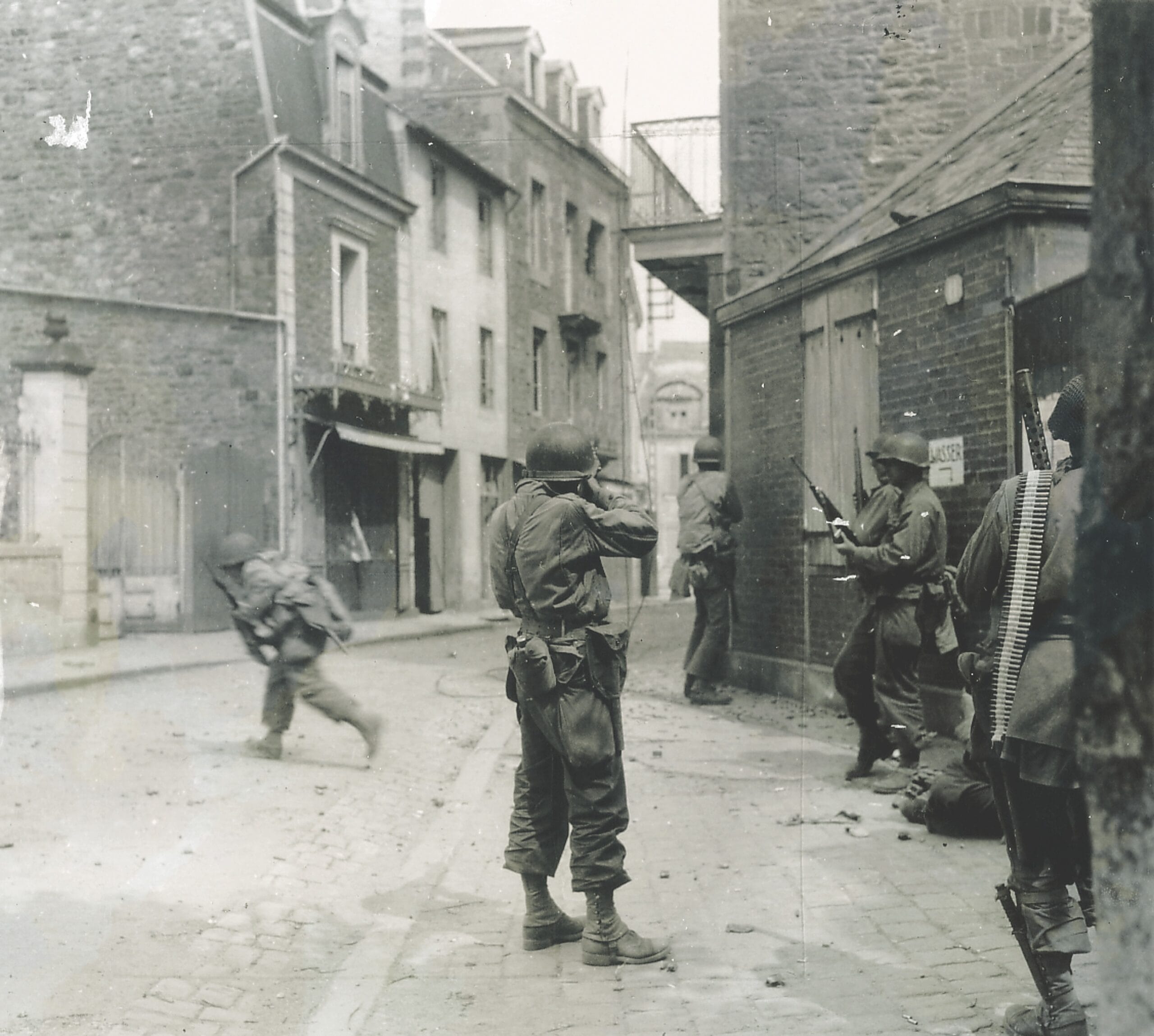A Picture-Perfect City Becomes a Battlefield
Imagine St. Malo, a charming port city on the coast of Brittany, France. Known for its stunning medieval walls, cobblestone streets, and delicious seafood, it was an idyllic destination. But during WWII, this picturesque city transformed into a battleground, caught in a desperate struggle for control.
St. Malo’s location on the English Channel made it a strategic prize. For the Allies, capturing it meant tightening their grip on the French coastline, potentially disrupting German supply lines and opening new avenues for their advance. For the Germans, holding onto St. Malo meant clinging to a valuable port and delaying the Allied liberation of France.
The Battle for St. Malo: A Clash of Wills
The battle that unfolded in the summer of 1944 was brutal. American soldiers, many of whom were young and inexperienced, faced seasoned German troops entrenched within the city’s ancient walls. Intense street fighting erupted, buildings crumbled under artillery fire, and the constant threat of snipers loomed over the devastated city.
Adding to the complexity, the Germans had heavily fortified a small island just off St. Malo’s coast called Cézembre. This island fortress, bristling with artillery, proved to be a major obstacle for the Allies. They knew they couldn’t fully secure St. Malo without neutralizing the threat from Cézembre, but assaulting the island would come at a heavy cost.
For weeks, the battle raged on. The fighting was so intense that over 80% of St. Malo was reduced to rubble. The once vibrant city, filled with life and laughter, became a haunting testament to the destructive power of war.
The Human Cost of Liberation
While the exact civilian casualties remain unknown, it’s likely that hundreds, if not thousands, of innocent lives were lost amidst the fighting. Imagine losing your home, your city, and potentially loved ones in the blink of an eye.
The Allied victory, while a strategic win, came at a heavy price. The fierce resistance put up by the German defenders meant that the Allies’ advance was delayed, giving some German forces a chance to escape and regroup.
Rising from the Ashes: Rebuilding St. Malo
In the aftermath of the battle, St. Malo was a ghost of its former self. Yet, amidst the destruction, a spirit of resilience emerged. The people of St. Malo, with unwavering determination, began the daunting task of rebuilding their city, piece by piece, stone by stone.
Today, when you visit St. Malo, you’ll find a city that beautifully blends its medieval past with its modern present. The scars of war are still visible, not as wounds, but as powerful reminders of the sacrifices made and the enduring strength of the human spirit. St. Malo stands as a testament to the fact that even in the darkest of times, hope, resilience, and a determination to rebuild can prevail.
Why is Saint-Malo Famous? Beyond the Battlefields
Saint-Malo’s fame extends far beyond its role in WWII. Its strategic location on the English Channel has made it a key player in centuries of history, from Viking raids to global exploration.
A History Forged by the Sea
Before the war, Saint-Malo was a renowned resort town, popular with wealthy Parisians. Its history, however, is anything but tranquil. The city boasts a rich tapestry of maritime adventure, architectural marvels, and cultural vibrancy.
- A History of Resistance: Saint-Malo has a long history of defying authority. In the 16th and 17th centuries, it was a haven for privateers, essentially state-sanctioned pirates who preyed on enemy ships. This independent spirit likely contributed to the city’s fierce resistance during WWII.
- Architectural Treasures: Saint-Malo’s strategic importance led to the construction of impressive fortifications, including its iconic ramparts, which still stand today. These structures offer a tangible link to the city’s past and a reminder of its enduring strength.
- A Center for Exploration: Saint-Malo was a launching point for exploration and discovery. Explorer Jacques Cartier, who claimed Canada for France, set sail from Saint-Malo in the 16th century.
Today, Saint-Malo draws visitors from around the world, not just to explore its wartime past, but to soak in its unique blend of history, culture, and stunning coastal beauty.
Did the Americans Liberate St. Malo? A Collaborative Victory
The question of whether the Americans liberated St. Malo is more complex than a simple yes or no. While American forces played a pivotal role, it was a collaborative effort involving British and Free French forces.
A Turning Point in the Liberation of France
- Operation Overlord: The liberation of St. Malo was part of the larger Allied campaign to liberate France, following the D-Day landings in Normandy.
- A Combined Effort: While the US 83rd Infantry Division spearheaded the assault on St. Malo, they were supported by Free French and British forces, both on land and at sea.
- A Costly Victory: The liberation came at a high price. The intense fighting left the city devastated, with 80% of its buildings reduced to rubble.
The liberation of St. Malo, while a significant victory, was a shared effort by Allied forces. The battle serves as a reminder of the complexities of war and the enduring cooperation between nations united against tyranny.
Remembering St. Malo: Lessons from the Rubble
St. Malo stands as a symbol of the enduring human spirit. The city’s history, particularly its experience during WWII, offers valuable lessons about resilience, the cost of freedom, and the importance of remembering the past.
By exploring the stories of those who lived through the bombing of St. Malo, we gain a deeper understanding of the human toll of war and the enduring power of hope in the face of adversity.
- Jerry McSorley’s Post-Divorce Life: New Beginnings - July 16, 2025
- The Rise and Fall of the New Haven Nighthawks: A Minor League Hockey Legacy - July 16, 2025
- Unlock Jerry McSorley’s Career Highlights: Eye Tax Inc.’s Solar Success - July 16, 2025

















1 thought on “The Battle for St. Malo: A WWII Story of Destruction and Rebirth”
Comments are closed.